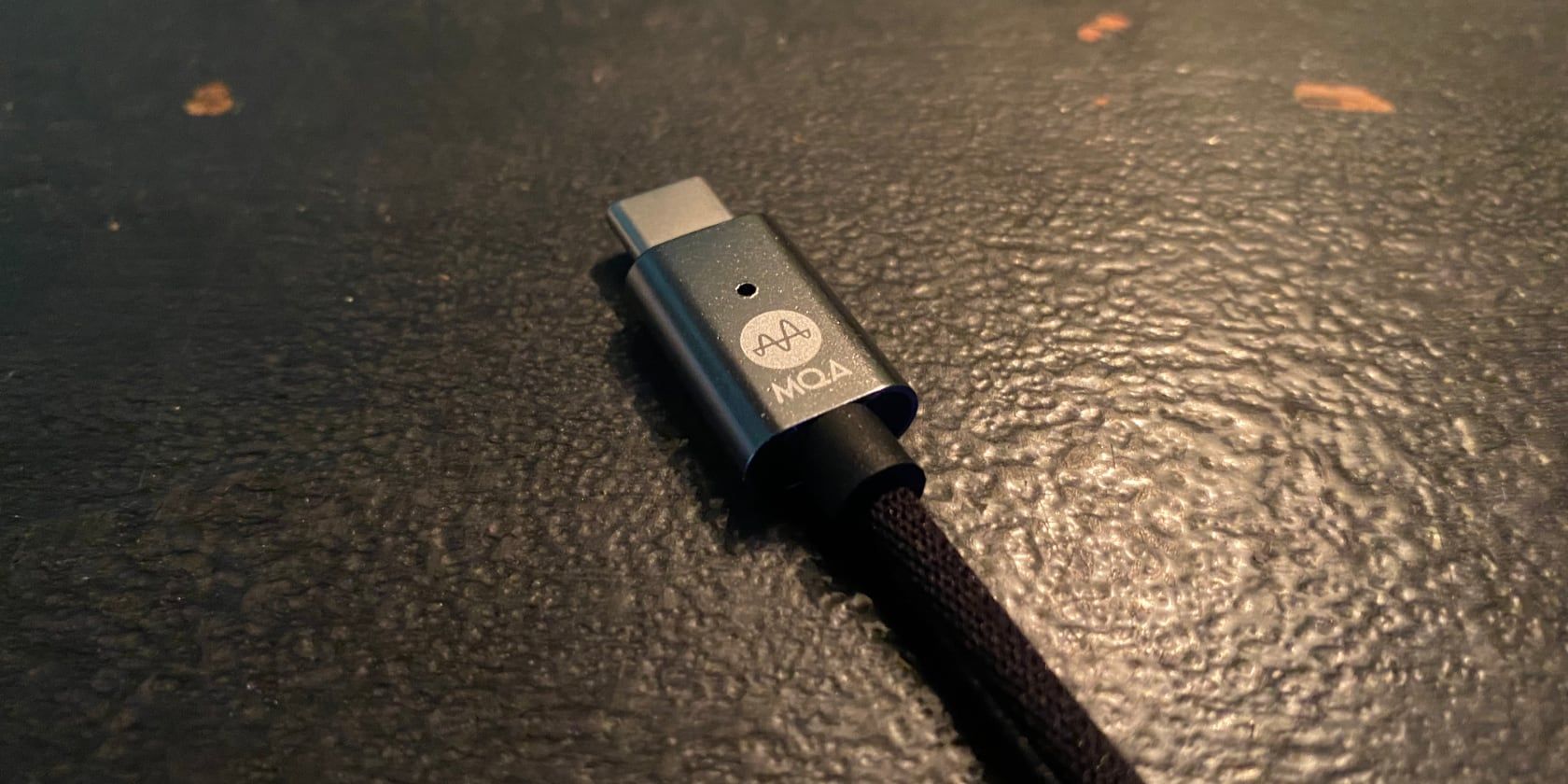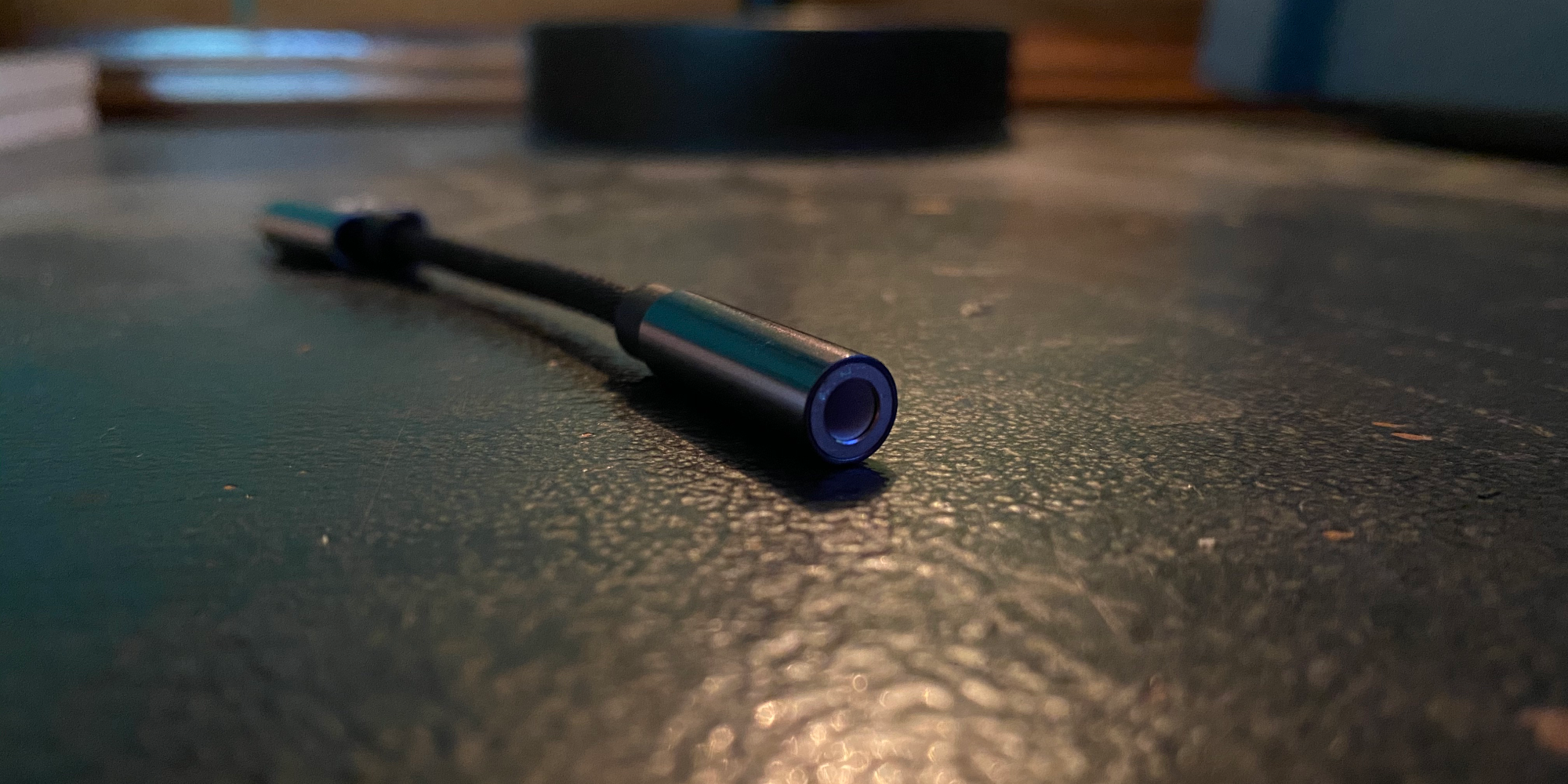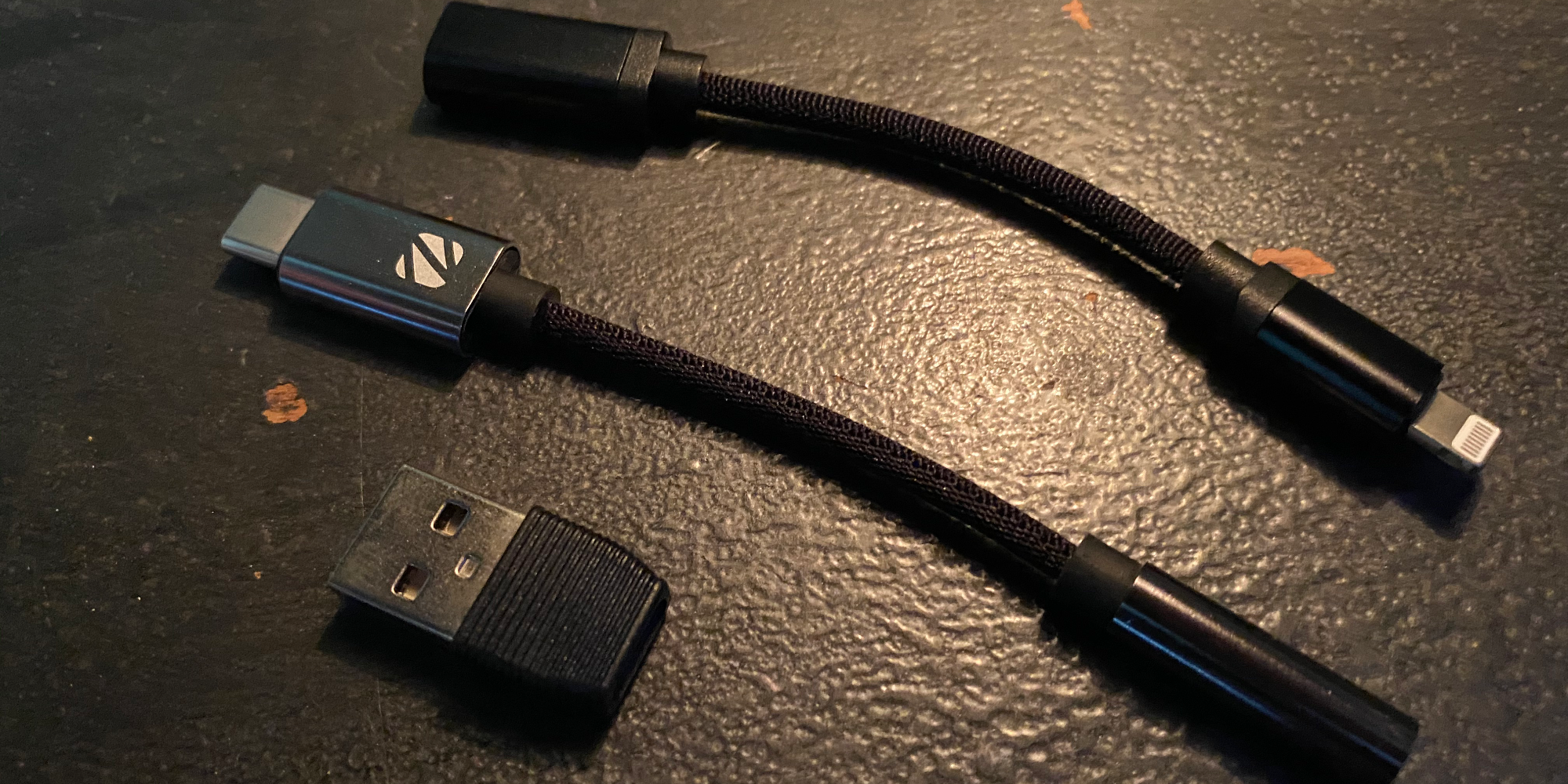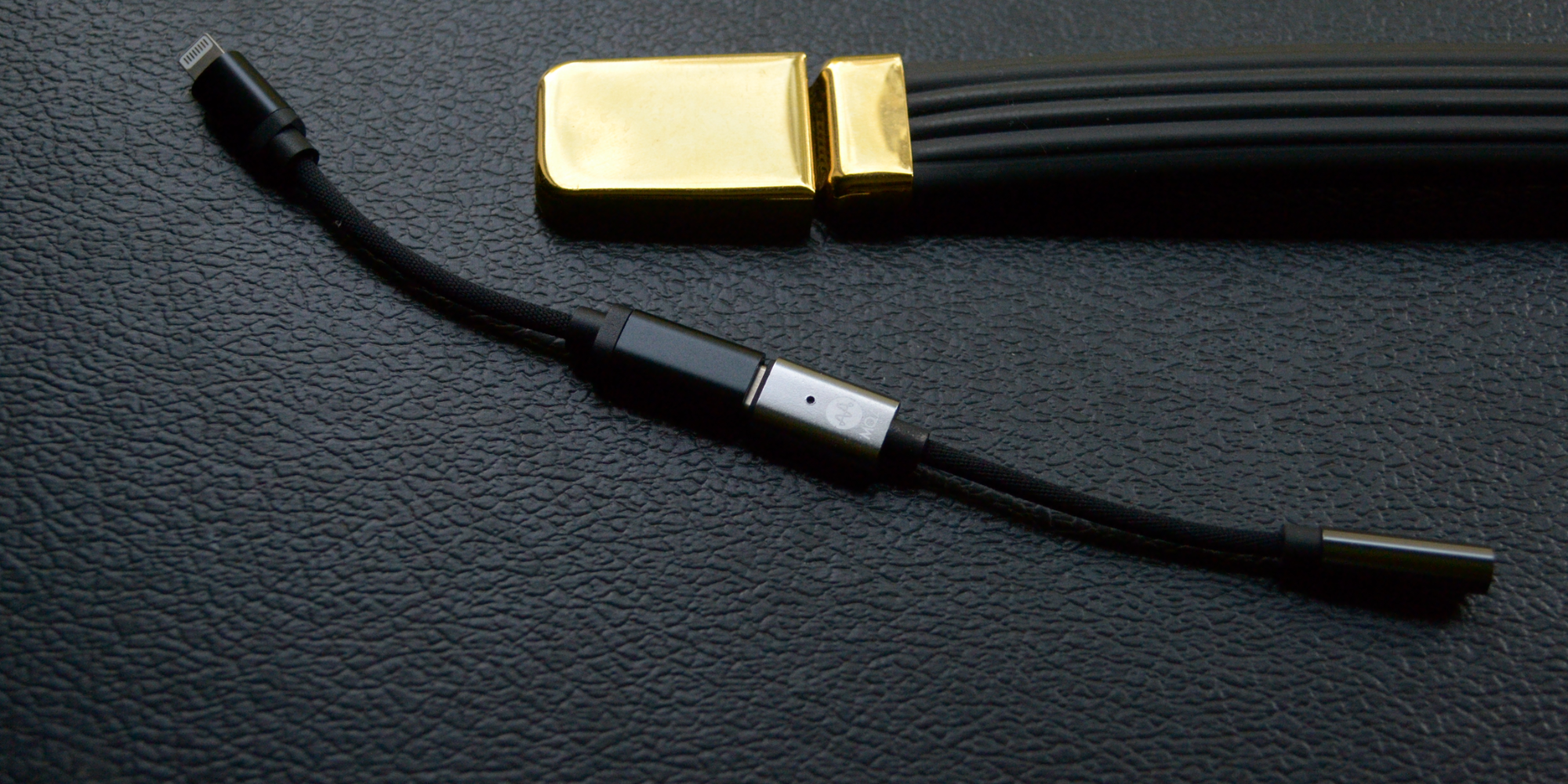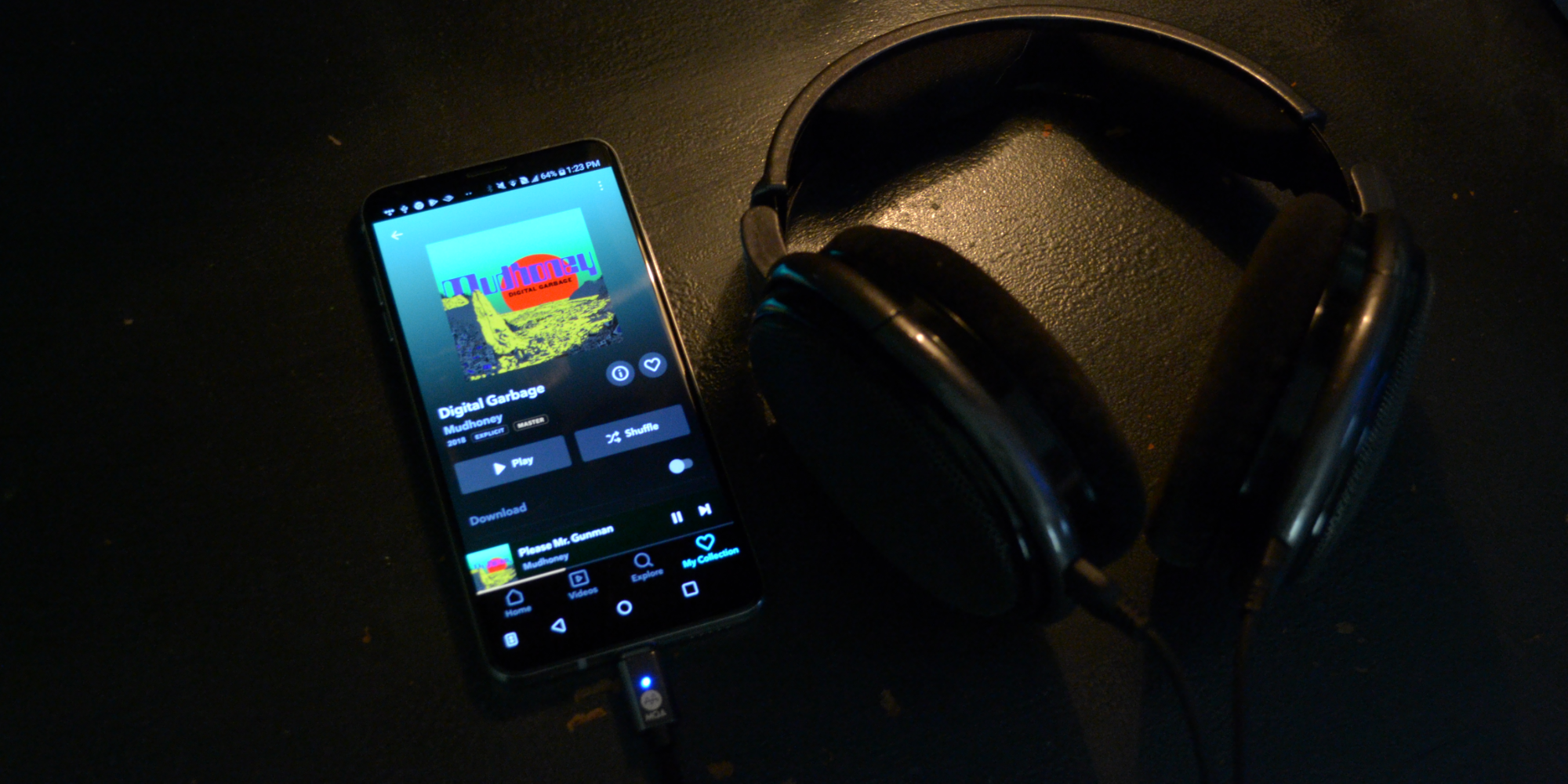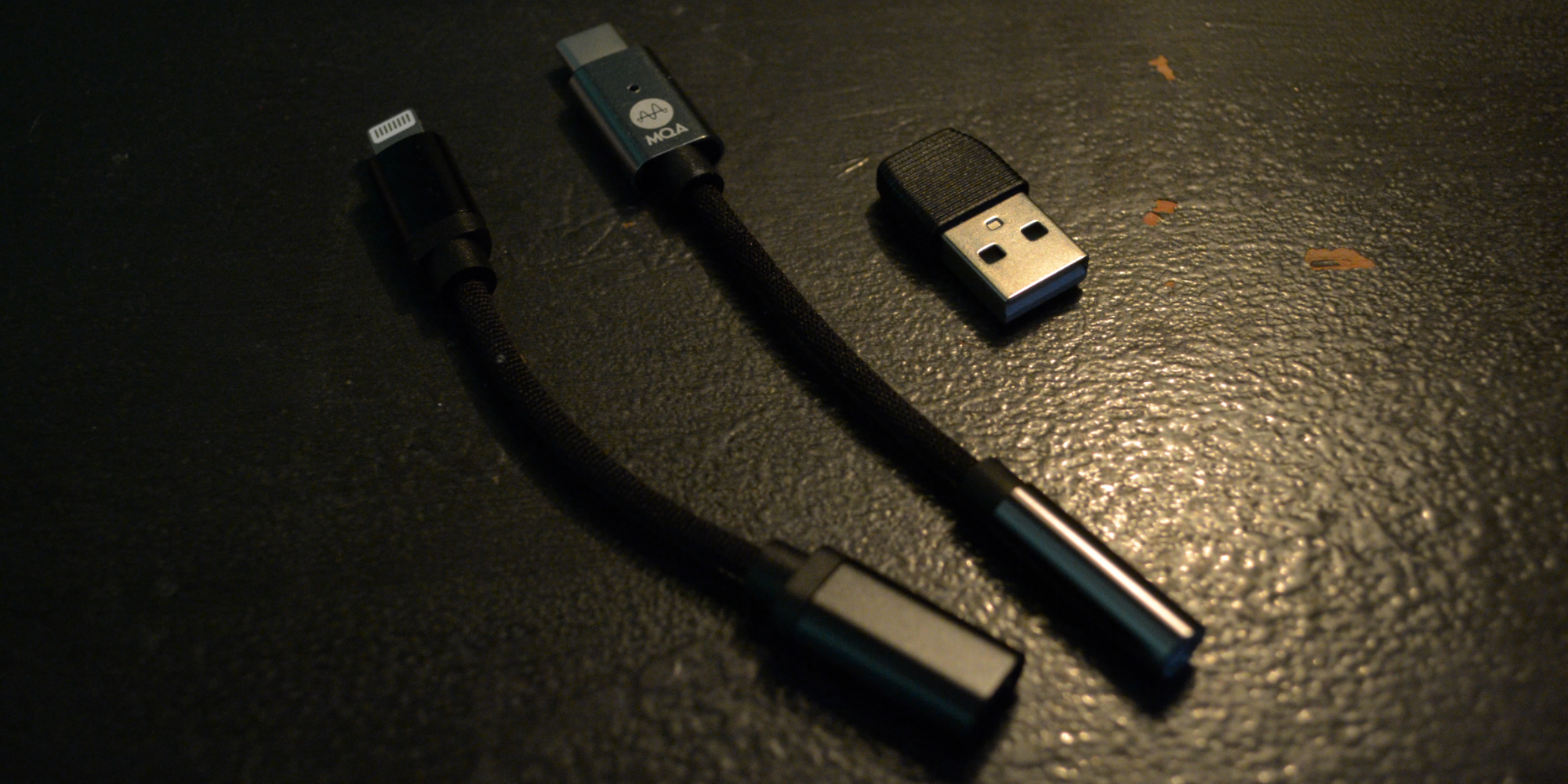Zorloo Ztella Integrated USB-DAC
The Zorloo Ztella USB-DAC isn't for everyone, but if you feel like your phone or computer is letting your headphones down, this is an affordable way to bump up your audio quality.
- Brand: Zorloo
- Supported Formats: PCM, DSD, MQA
- Connector: USB-C
- Weight: 5g
- Excellent sound quality
- Drives relatively power-hungry headphones
- Built-in LED for MQA audio is handy
- Lightning dongle is slightly oversized
If you've got a decent set of headphones, it's important to make sure you're sending them the best signal you can. With a dedicated audio setup, that's easy. With your computer or, even worse, your phone, it's a tougher situation, thanks to disappearing headphone jacks.
The Zorloo Ztella DAC is a fancier version of the dongles you can buy to use headphones with phones without headphones jacks. That said, it's also got a few tricks up its sleeve to get you the best audio fidelity with the least amount of hoops to jump through.
What Is The Zorloo Ztella DAC?
Like all dongles of this size and type, the Ztella is a few things combined into one. First is the digital to analog converter (DAC), which takes the digital signal from your device and turns it into an analog signal that speakers and other audio equipment can work with.
Second is the amplifier. Once the signal is converted, it's too quiet for headphones to playback, so an integrated amplifier is key. In this case, it's a small one that lacks volume control.
Finally, on top of both of those things, the Ztella is also an MQA decoder. MQA stands for Master Quality Authenticated and is a codec that aims to bring the benefits of hi-res audio without making the process too complicated. We'll dive into exactly what MQA brings to the table later on.
Who Still Wants To Use Wired Headphones?
If you're using Bluetooth headphones like, for example, the PuroPro Hybrid ANC Wireless Headphones we recently reviewed, this DAC will do you no good. This is for wired headphones only.
Of course, if you're an audio enthusiast, you probably own at least one set of wired headphones or in-ear monitors (IEMs). As a matter of fact, you probably own several. This also means that if you want to listen on your phone, you're probably carrying a portable DAC/amp combo with you, which can get to be on the bulky side.
If you want a similar listening experience without the bulk, you're the exact sort of person that Zorloo has in mind with the Ztella.
MQA Explained
The MQA format is an interesting one, mostly due to the "Authenticated" part of the name. MQA is meant to be part of the recording process, but can also be incorporated later on, such as in the case of remastered older album.
The producer or mastering engineer uses an MQA encoder to see how the recording will sound once encoded, letting them finish the final product with that in mind. This is a nicer alternative to taking CD-quality audio and hoping that a streaming service's compression algorithm will be kind to it.
MQA is also interesting because it doesn't need specialized hardware, except that it also does. No, that sentence isn't a mistake.
You can play MQA audio on anything without specialized hardware. Add that specialized hardware, however, and you'll get additional details that standard CD-quality sound can't capture.
That's what makes this little dongle so interesting.
Using The Ztella DAC
While it seems mainly aimed at people who would like to listen on their phones, the Zorloo Ztella can work on most any device with a USB-C port. In my case, I tested the Ztella on a MacBook Pro, an iPad Pro, an iPhone 11, and an LG V30.
In every case, I listened using the Tidal streaming service, as it's the easiest way (at least in the U.S.) to find a large quantity of MQA-ready music to listen to. Listening on the MacBook Pro was easy.
I simply plugged my headphones into the 3.5mm jack on one end, then plugged the USB-C connector on the other into the computer. Then I launched Tidal, went to settings and made sure Master Quality Audio was selected in the Quality section (this requires a Tidal Hi-Fi account). Then I simply found an album listed with Master Quality Audio, and hit play.
When the device is set to properly decode MQA, you'll see the light turn magenta in color. Once you see this, you know you're ready to start listening. I didn't test on a Windows PC, but Tidal supports MQA on Windows, so everything should work just as easily.
The process is slightly different and at times more complex on mobile devices. In each case it's a little different, so we'll look at those separately.
Android
In my case, testing on Android was sort of a moot point, as the LG V20 already supports MQA. That said, I could still use the device like an amplifier. This still let me hear the difference between the amplifiers and how they affected the quality of the audio, which we'll touch on below.
Most Android devices take a little setup to work with MQA properly. First, you need to go to the settings menu in Tidal and then find the Quality section. Here make sure that quality is set to Master.
For the best fidelity, you'll want to actually listen in another app, USB Pro Player. This will let you play music from Tidal but helps to deliver the signal to the Ztella in a way where it decodes MQA properly. This is an Android issue, so it may be fixed in the future.
iOS
Using the Zorloo Ztella DAC on iOS is both easier and slightly more complicated. The complication is that, due to the Lightning port on most iOS devices, you'll likely need a USB-C to Lightning adapter, which Zorloo sells as an add-on.
Once that is attached, however, it's quite simple. Just go to the Settings in Tidal, make sure that Master quality audio is selected, and start listening.
Audio Quality
In order to test the Ztella as thoroughly as I could, I not only used different devices for playback, but also listened on multiple headphones and speakers.
For headphones, I used my trusty Sennheiser HD650s, with whose sound I'm thoroughly acquainted. For in-ears, I used a set of AudioFly AF140 IEMs, as well as a relatively cheap pair of MassDrop X NuForce EDC in-ears.
While I've made a big deal about MQA so far in this review, it's important to point out that the Ztella is that it supports hi-res PCM files up to 32-bit/384khz and DSD up to 5.6Mhz. MQA is just icing on the cake.
First, to test the built-in amplification and conversion courtesy of the ESS Sabre 9281CPRO chip, I listened to a few hi-res files I'm well familiar with in Audirvana, one of our favorite hi-res players for the Mac.
The first thing I noticed is how surprisingly powerful the amp in the Ztella is. The HD650s aren't the easiest headphones to drive but seemed to have as much volume and detail as when connected to my standard DAC/amp setup.
Writing about a DAC in terms of sound quality can be tricky because it's not supposed to impart any character. A good DAC/amp combo gives you the signal as pure and powerful as possible unless you're getting into expensive tube amps.
The soundstage was as detailed as expected, and the frequencies I've come to expect in certain songs where there when I expected them to be. The real surprise came when I started listening to the same versions of these songs on Tidal.
Listening Via Tidal
Some audiophiles refuse to refer to as MQA as hi-res because it isn't lossless. Instead, it aims only to preserve the parts of the signal we can actually hear. No, this may not technically be lossless, but when it sounds this good, who cares?
Listening to Crosby, Stills & Nash's "Suite: Judy Blue Eyes," a song I often use for reference, I couldn't notice a difference between the MQA version on Tidal and my own 24-bit/192 kHz FLAC version. This was also true for any songs I compared between.
Now, I may not have golden ears, but I care enough about audio to have a relatively sizable collection of hi-res audio files. I don't plan to stop buying those files, but how well Tidal's streaming MQA held up, at least played through the Ztella, was impressive to say the least.
Should You Buy The Ztella DAC?
The Zorloo Ztella DAC is very good at what it does—of that there is no question. The question is whether you need it. First, you need to ask yourself if your headphones are high-enough in quality, as you're not going to reap many benefits with the earbuds that came with your phone.
Second, you need to look at how you listen to music. Do you buy MQA music or stream via Tidal? If so, the built-in MQA decoding in the Ztella combined with the small size makes it a near-essential buy. Even if you listen to other hi-res formats, if you play them on your phone, the Ztella is a great match.
This is a niche product for a very specific type of person, but if you're that person, you'd be hard-pressed to find anything better in this form factor and price.

